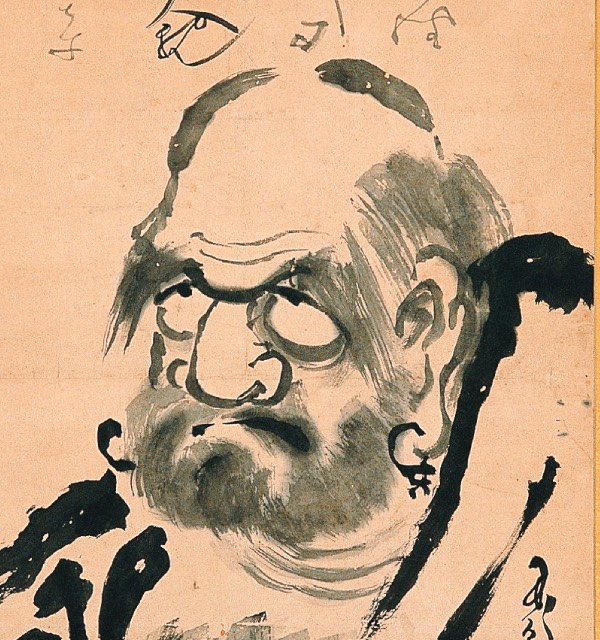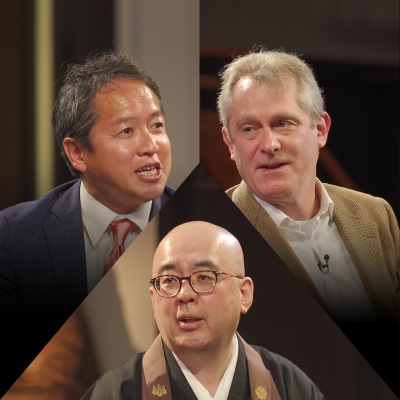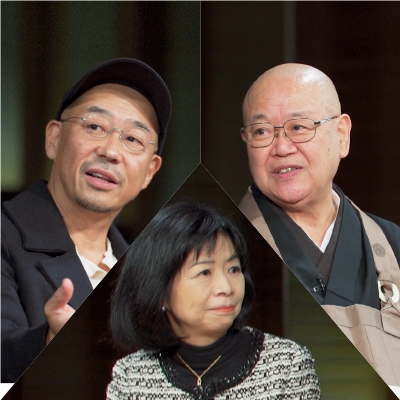
The History of Zen: Discovering the Roots of Sōtō Zen (10)
From Prof. KAGAMISHIMA Genryū’s Zengaku gairon kōgi nōto
(Introduction to Zen Studies Lecture Notes)
Chapter Four: The Early Zen School
The Chinese Zen school (note that the Chinese pronunciation of Zen is Chan, but for the sake of simplicity the reading Zen will be used throughout to refer to Chinese Chan) takes Bodhidharma as its First Patriarch, and Huike (Jpn. Eka, 487–593) who followed him as the Second Patriarch. Bodhidharma established the roots of his Zen in China, but the spread of Zen throughout China occurred through his disciple Huike.
Huike was Chinese, and having heard that Bodhidharma had brought Zen to China from India, came from afar and begged Bodhidharma to take him on as a disciple, but Bodhidharma did not readily admit him. In the end, it is said that Huike cut off his own left arm to demonstrate his resolve, and Bodhidharma finally agreed to make him his disciple. In the modern Zen school Śākyamuni Buddha’s Jōdō-e成道会*1 is celebrated on 8 December, and on the following day the Danpi-e断臂会*2 is practiced. This custom shows gratitude to Huike, who by cutting off his own left arm in his desire to attain the path, brought Zen to all of China.
After Huike, the Third Patriarch was Sengcan (Jpn. Sōsan僧璨, ?–606). The biography of Sengcan is unclear and while he was sometimes said to not be a historical person, his historical existence is confirmed today. Sengcan avoided people and lived as a recluse for his whole life while practicing the path. The Inscription on Faith in Mind (Xinxing ming, Jpn. Shinji mei『信心銘』) is said to have been written by him.
Daoxin (Jpn. Dōshin, 580–651) succeeded Sengcan as the Fourth Patriarch. Daoxin lived at the West Mountain西山 of Mt. Shuangfeng (Jpn. Sōhōzan雙峰山) in Huangmei County黄梅県 of Qizhou Province蘄州, were he gathered 500 disciples and taught Zen. The patriarchs from Bodhidharma to Sengcan had no fixed residence and spent their lives wandering, but Daoxin was the first to live in one place.
Hongren (Jpn. Kōnin or Gunin, 602–675) succeeded the Fourth Patriarch Daoxin as the Fifth Patriarch. Hongren moved his monastery to the East Mountain of Mt. Shuangfeng, where he is said to have taught Zen to 700 students. No writings of Daoxin are preserved, but Hongren wrote the Treatise on the Supreme Vehicle (Zuishangcheng lun『最上乗論』, or Treatise on Cultivating Mind『修心論』).
*1 This is a ritual performed on the day that Śākyamuni Buddha attained awakening to become the Buddha.
*2 This is a ritual focused on zazen performed on 9 December to commemorate the story of Huike, the Second Patriarch of Chinese Zen.

SPECIAL
ZEN,KOMAZAWA,MANAGEMENT
For our 5th discussion in this series we welcomed guest participant Mr. David Atkinson, CEO of Konishi Decorative Arts and Crafts, for a three-way dis・・・
2020.08.07

SPECIAL
ZEN,KOMAZAWA,MOVIE
For our fourth interview we welcomed film director Tatsushi Ōmori as our guest, and together with Komazawa University Chancellor Seishi Nagai and Prof・・・
2020.03.05

